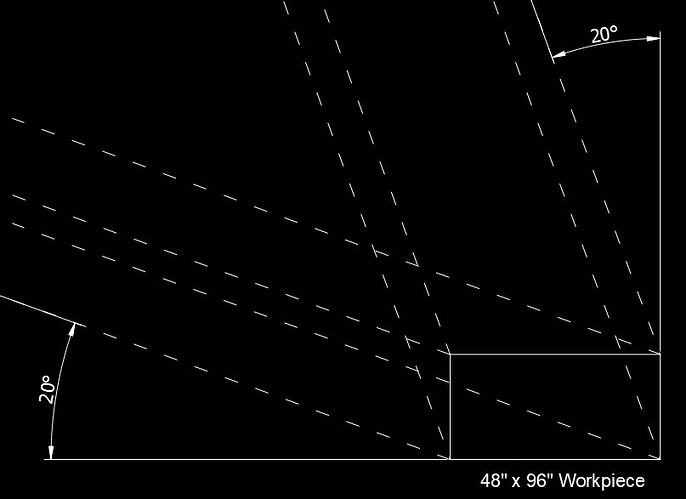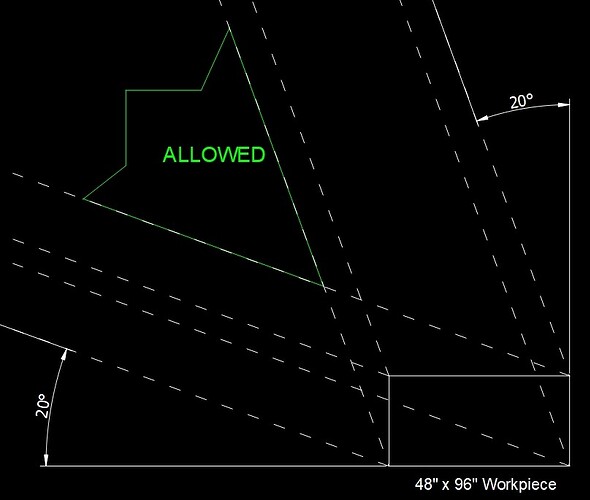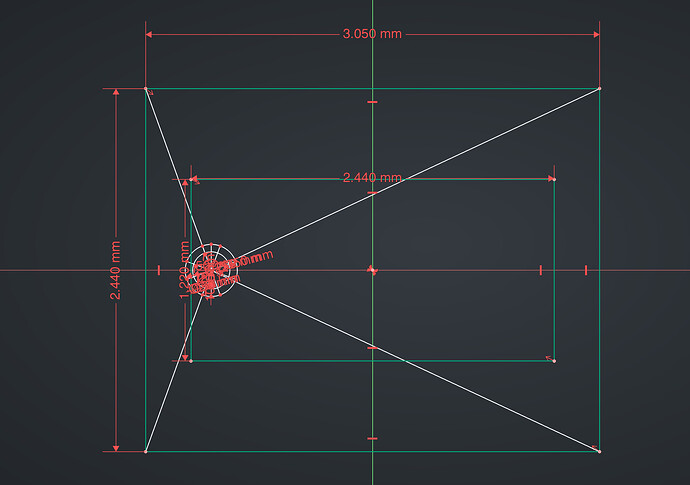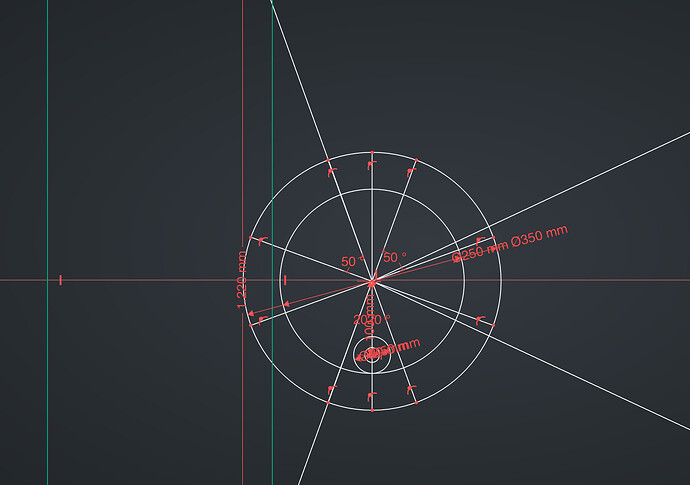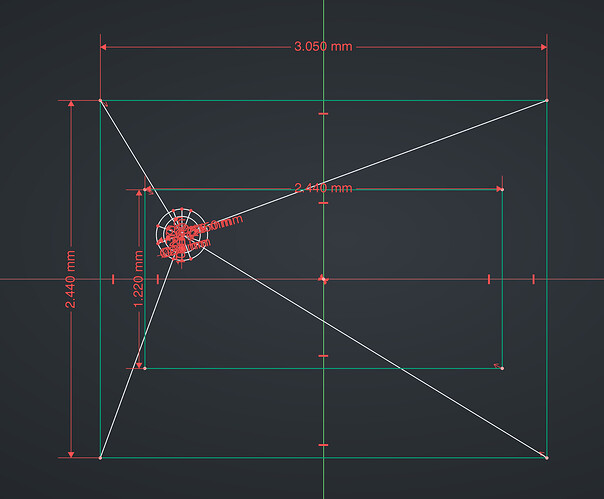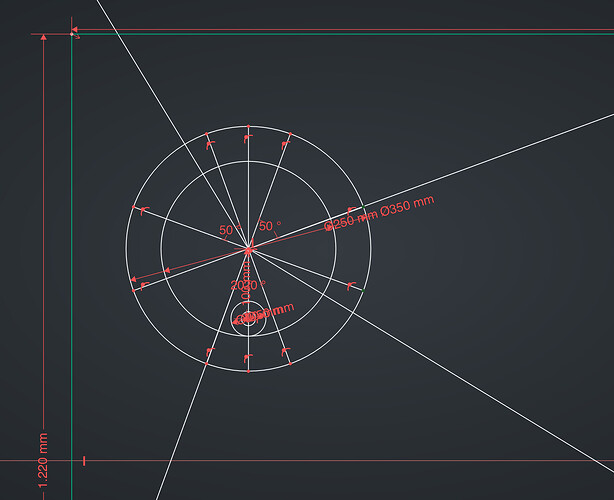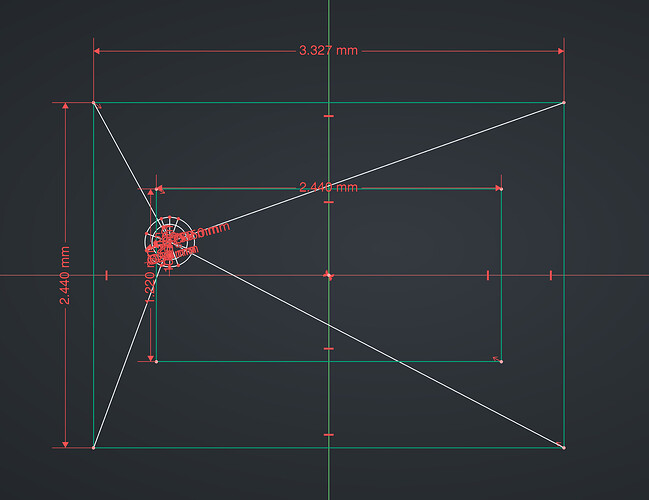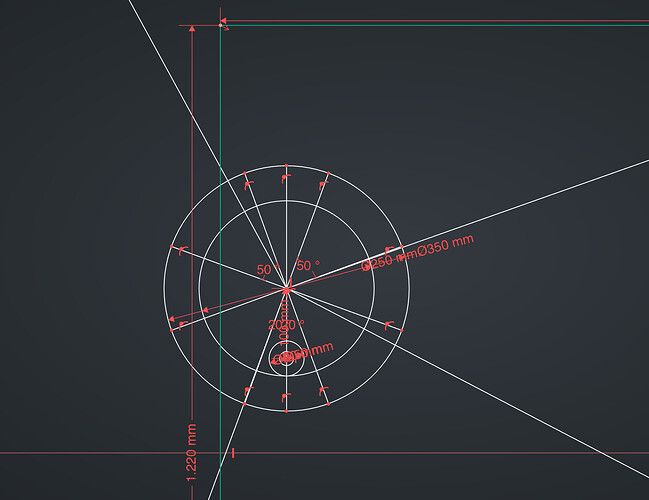Ok, so 20 degrees from the vertical/horizonal plane. Since the verticals are
tapered, I assume this is at the widest part of the taper. Is this correct? If
so, the middle two arms would get just a little more movement than the top and
bottom anchors. If my math is correct, this difference could be significant.
Please check my math
8x10’ frame
distance from top center to anchor 5’ horizontal 2’ vertical
ratio .4
inv tan(2/5) = 21.8 degrees works barely
distance from side center to anchor 1’ horizontal 4’ vertical
ratio .25
inv tan(1/4) = 14 degress, can’t actually work there
let’s try a 8x12 frame
top center 6’ 2’
ratio .33
inv tan(2/6) = 18 degrees, can’t actually work there
side center 2’ 4’
ratio .5
inv tan(2/4) = 26.5 degrees works
tan(20) = .364, so you need the ratio between the two numbers to be above this,
or to put it anothe way, if you have 2.75’ or more offset from the center of the
workpiece to the anchor for every 1’ in the other direction, you run into
problems
Setting up a quick spreadsheet and trying just a couple numbers, it looks like a
11’ x 8’ frame or 18" off the sides and 24" off the top and bottom results in
angles of 19.98 degrees and 20.56 degrees
This is close enough that differences between the CAD and the injection molds,
draft angle on the arms, and additional clearance provided by the taper in the
verticals will determine if it will work or just run into grief at the centers
of the edges.
the shields around the lead screws can be made narrower (or eliminated??), to
allow the arms a little more movement (and since the sled can rotate, it would
not only increase how narrow the belt angles can get at the top/bottom, but also
help a little on how wide they can get on the sides).
David Lang
